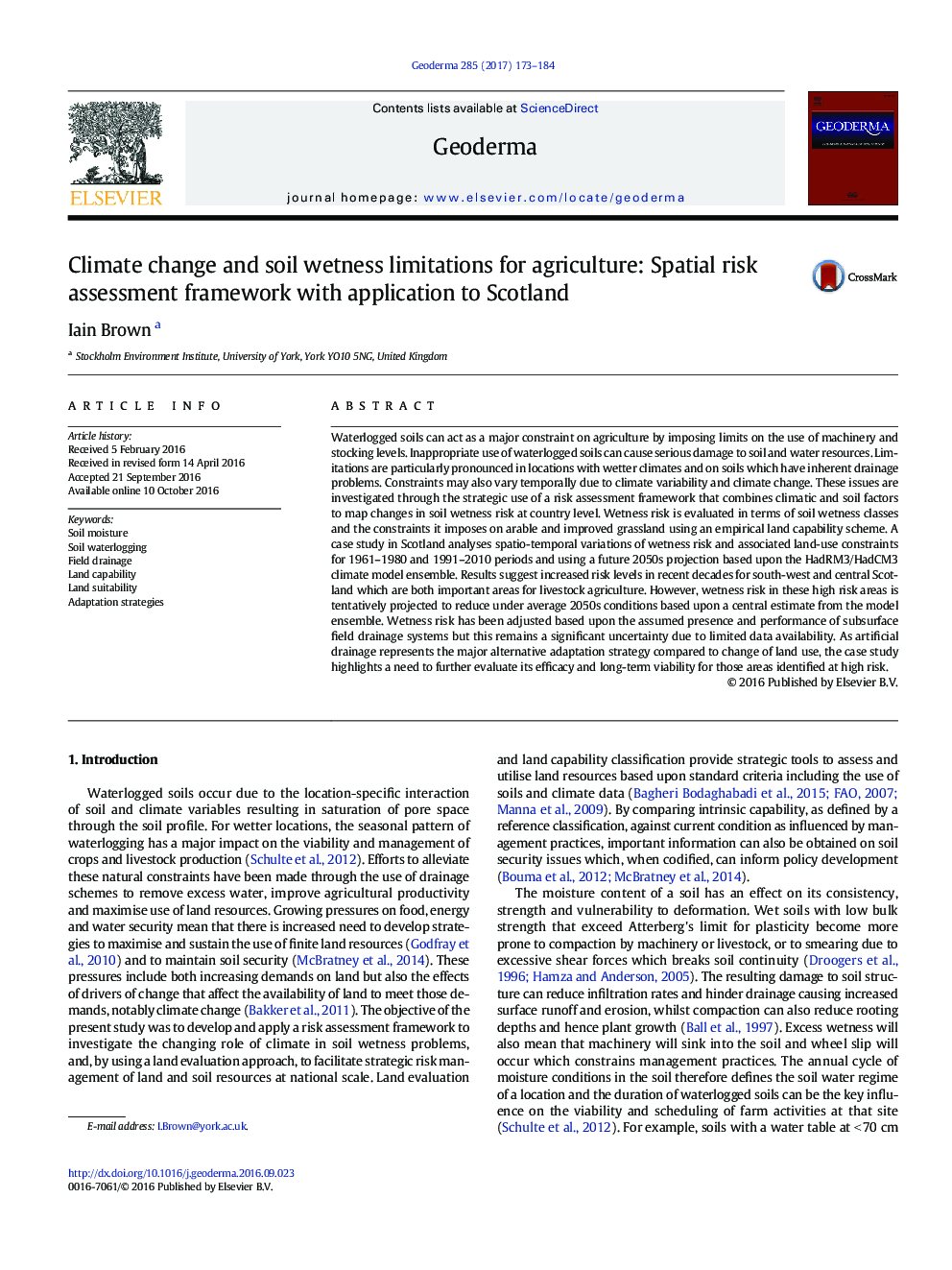| کد مقاله | کد نشریه | سال انتشار | مقاله انگلیسی | نسخه تمام متن |
|---|---|---|---|---|
| 6408206 | 1629432 | 2017 | 12 صفحه PDF | دانلود رایگان |
- Risk assessment framework developed for soil wetness risks to agriculture with application to Scotland
- Vulnerable areas identified and change in risk due to recent climate change
- Projected changes in risk presented for future (2050s) climate change projection
- Intensive land use in south-west and central Scotland at high risk but possibly alleviated by future changes
- Extent and performance of field underdrainage is a major uncertainty
Waterlogged soils can act as a major constraint on agriculture by imposing limits on the use of machinery and stocking levels. Inappropriate use of waterlogged soils can cause serious damage to soil and water resources. Limitations are particularly pronounced in locations with wetter climates and on soils which have inherent drainage problems. Constraints may also vary temporally due to climate variability and climate change. These issues are investigated through the strategic use of a risk assessment framework that combines climatic and soil factors to map changes in soil wetness risk at country level. Wetness risk is evaluated in terms of soil wetness classes and the constraints it imposes on arable and improved grassland using an empirical land capability scheme. A case study in Scotland analyses spatio-temporal variations of wetness risk and associated land-use constraints for 1961-1980 and 1991-2010 periods and using a future 2050s projection based upon the HadRM3/HadCM3 climate model ensemble. Results suggest increased risk levels in recent decades for south-west and central Scotland which are both important areas for livestock agriculture. However, wetness risk in these high risk areas is tentatively projected to reduce under average 2050s conditions based upon a central estimate from the model ensemble. Wetness risk has been adjusted based upon the assumed presence and performance of subsurface field drainage systems but this remains a significant uncertainty due to limited data availability. As artificial drainage represents the major alternative adaptation strategy compared to change of land use, the case study highlights a need to further evaluate its efficacy and long-term viability for those areas identified at high risk.
Journal: Geoderma - Volume 285, 1 January 2017, Pages 173-184
